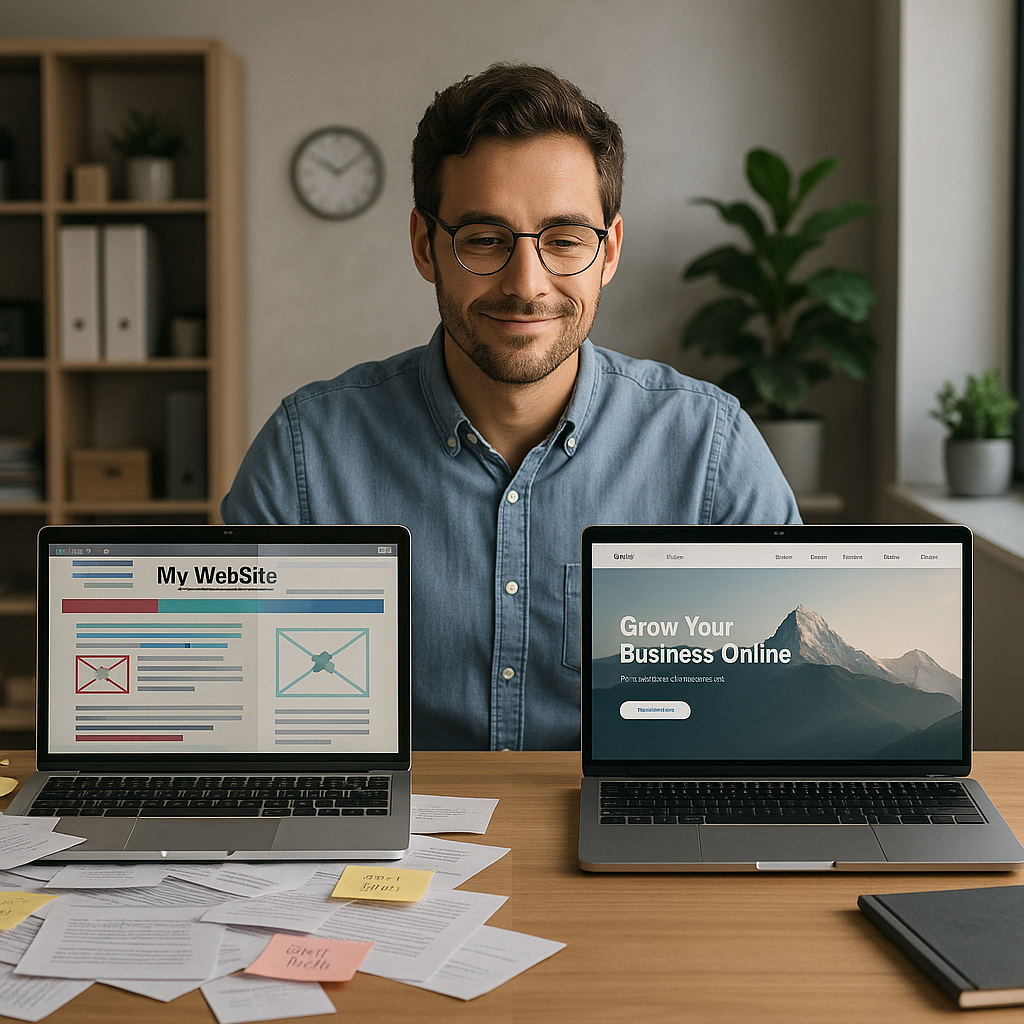Boost Your Small Business with Mobile-Friendly Email Design Tips
The Mobile Revolution: Why Your Small Business Needs Email Designs That Pop on Smartphones
Hey there, fellow small business owners! Let's chat about something that might be slipping under your radar but could cost you big time: mobile-friendly email design. Yep, you heard that right. Those little messages you're sending out? They need to look snazzy on smartphones, or you're leaving money on the table.
Picture this:
You've crafted the perfect email. It's witty, informative, and offers a deal your customers can't refuse. You hit send, feeling like a marketing genius. But here's the kicker—over half of your recipients open it on their phones, and it looks like a jumbled mess. Yikes!
Now, I know what you're thinking. "But I'm not a tech whiz!" Don't worry, my friend. You don't need to be. Let's break this down into bite-sized pieces that'll have you creating mobile masterpieces in no time.
First things first: why should you care? Well, buckle up, because this stat might knock your socks off. Over 60% of emails are opened on mobile devices. That's not just a trend; it's a tidal wave. If your emails aren't mobile-friendly, you're waving goodbye to more than half of your potential engagement. Talk about a missed opportunity!
So, what makes an email mobile-friendly? It's not rocket science, I promise. Let's dive into the nitty-gritty:
1. Keep it simple, sweetie!
A cluttered email is nobody's friend, especially on a tiny screen. Stick to a clean, uncluttered design. Think of it as the Marie Kondo approach to email marketing – if it doesn't spark joy (or serve a clear purpose), out it goes!
2. Font size matters
Nobody likes squinting at their phone, trying to decipher microscopic text. It's frustrating and, let's face it, insulting. Show your readers some love with big, bold fonts that are easy to read without zooming in. Your customers' eyes will thank you, and so will your click-through rates.
3. Picture-perfect
We all love a good image, right? But on mobile, large images can be the kiss of death. They slow down loading times, and nobody has time for that. Use high-quality visuals that pack a punch without weighing down your email. And always, always optimize them for mobile viewing.
4. Buttons that beg to be clicked
Have you ever tried to tap a tiny button on your phone and ended up hitting everything but the target? Maddening, isn't it? Don't put your customers through that. Make your call-to-action buttons big, bold, and impossible to miss. They should be like a neon sign in Vegas – you just can't help but notice them.
5. One-column layout is your BFF
Multiple columns might look great on a desktop, but on mobile? It's a recipe for disaster. Stick to a single-column layout. It's easier to read, easier to scroll, and way less likely to send your customers running for the hills (or worse, the unsubscribe button).
6. White space is not wasted space
Don't be afraid of a little breathing room. White space isn't just pretty; it's functional. It gives your content room to shine and makes your email easier to navigate on a small screen. Think of it as the palate cleanser of email design.
7. Short and sweet subject lines
Your subject line is like a newspaper headline—it needs to grab attention fast. On mobile, you've got even less real estate to work with. Keep it punchy, relevant, and short — for the love of all things holy.
8. Test, test, and test again
Before you hit that send button, test your email on different devices. What looks great on your iPhone might look wonky on an Android. A little testing goes a long way in preventing big headaches down the road.
Now, let's talk about why this matters for your bottom line. A mobile-friendly email isn't just about looking pretty (although that doesn't hurt). It's about functionality. When your emails are easy to read and navigate on a smartphone, magical things happen:
- Your open rates soar: People are likelier to open emails they can read.
- Click-through rates skyrocket: If they can find and tap your CTA button, they're more likely to use it.
- Conversions increase: A smooth mobile experience means fewer obstacles between your customer and a sale.
- Brand loyalty grows: Consistently great experiences build trust and keep customers returning for more.
Think about it – when was the last time you purchased your phone? Chances are, it was pretty recent. Now, imagine if that process had been clunky and frustrating. Would you have followed through? Probably not. Don't put your customers in that position.
Here's the deal: mobile-friendly email design isn't just a nice-to-have anymore. It's essential. It's the difference between your message landing with a bang or a whimper. It's the key to unlocking a whole world of engagement you might miss out on right now.
So, what are you waiting for? It's time to give your email marketing a mobile makeover. Start small if you need to – maybe tweak your font sizes or simplify your layout. Every little bit helps. And trust me, once you see the results, you'll wonder why you didn't do this sooner.
Remember, in the world of small business, every advantage counts. Mobile-friendly email design is one of those secret weapons that can set you apart from the competition. It shows your customers that you care about their experience, are up-to-date with technology, and are worth their time and attention.
Don't let your amazing content get lost in a poorly designed email. Give it the showcase it deserves. Your customers will thank you, your engagement rates will soar, and your bottom line—well, let's just say it'll be looking a whole lot healthier.
So go forth and conquer the mobile email world! Your small business success story is just a well-designed email away. Happy sending, folks!





